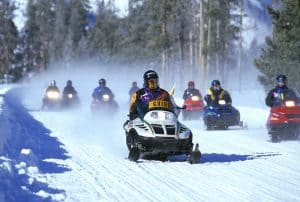Wild Wilderness v. Allen seems to have not shown up on the Forest Service litigation reports, but here is a newspaper version. On Sept. 8, the Ninth Circuit found that the decision to build the Kapka Sno-Park, a parking lot for snowmobile users on the Deschutes National Forest, was consistent with the forest plan and did not require an EIS. I found a couple of points interesting.
One was the court’s treatment of forest plan “standards and guidelines” that were prefaced with language indicating discretion. The court said, “But nothing in this provision mandates closure of any area to motorized use. It merely outlines steps that “will generally be taken” in the event of user conflicts. The Forest Plan outlines “an aspiration, not an obligation” and therefore “there is no law for us to apply in second-guessing the agency.”” It similarly dismissed language from the Recreation Opportunity Spectrum as “nonbinding guidance.” Note to the public participating in forest planning – if the plan doesn’t say “must” or “shall” the Forest Service won’t have to. (Recreation, unlike wildlife, doesn’t have any substantive requirements that a plan must meet using mandatory language.)
On the NEPA side, the court held that the forest didn’t have to explain why it changed from an EIS to an EA, as long as it justified the EA. It rejected the comparison “to cases in which agencies failed to provide reasoned explanations for changes in their position on matters of policy or factual findings.” The court stated, “The Forest Service here, however, never changed its mind on any factual or policy matter but only on how it planned to comply with its own procedural requirements. There was no agency decision to reverse, as a draft EIS is not an agency decision at all.” An EIS is not a decision, but this holding only makes sense to me if an EIS also does not represent a finding that there are significant impacts, which is would be a “factual finding.” In fact, an EIS may be prepared by an agency even if effects are not significant, so changing from an EIS to an EA doesn’t necessarily trigger an additional burden of explanation for the agency.

